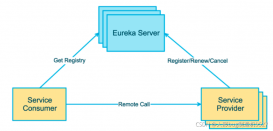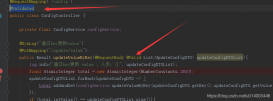本文实例为大家分享了SpringMVC文件下载的具体代码,供大家参考,具体内容如下
两个案例
1.为登录用户提供下载服务。
2.阻止仅通过输入网址即可获取下载。
文件下载概览
为了将文件发送给浏览器,我们需要在控制器中完成以下操作:
- 对请求处理方法使用void返回类型,并且在方法中添加HttpServletResponse参数。
- 将响应的内容类型设为文件的内容类型。Content-Type标题在某个实体的body中定义数据的类型,并包含媒体类型和子类型标识符。如果不清楚内容类型,并且希望浏览器失始终显示保存对话框,则将它设为APPLICATION/OCTET-STREAM。这个值时不区分大小写的。
- 添加一个名为Content-Disposition的HTTP响应标题,并赋值attachment;filename=fileName,这里的fileName是默认的文件名。
案例1:为登录用户提供下载服务
Domain类
|
1
2
3
4
5
6
7
8
9
10
11
12
13
14
15
16
17
18
19
20
21
|
package domain;public class Login { private String username; private String password; public String getUsername() { return username; } public void setUsername(String username) { this.username = username; } public String getPassword() { return password; } public void setPassword(String password) { this.password = password; }} |
Controller控制器
|
1
2
3
4
5
6
7
8
9
10
11
12
13
14
15
16
17
18
19
20
21
22
23
24
25
26
27
28
29
30
31
32
33
34
35
36
37
38
39
40
41
42
43
44
45
46
47
48
49
50
51
52
53
54
55
56
57
58
59
60
61
62
63
64
65
66
67
68
69
70
71
72
73
74
75
76
77
78
79
80
|
package controller;import domain.Login;import org.apache.commons.logging.Log;import org.apache.commons.logging.LogFactory;import org.springframework.stereotype.Controller;import org.springframework.ui.Model;import org.springframework.web.bind.annotation.ModelAttribute;import org.springframework.web.bind.annotation.RequestMapping;import javax.servlet.http.HttpServletRequest;import javax.servlet.http.HttpServletResponse;import javax.servlet.http.HttpSession;import java.io.*;@Controllerpublic class ResourceController { private static final Log logger = LogFactory.getLog(ResourceController.class); @RequestMapping(value = "/login") public String login(@ModelAttribute Login login, HttpSession session, Model model) { model.addAttribute("login",new Login()); if("ms".equals(login.getUsername())&&"123".equals(login.getPassword())) { session.setAttribute("loggedIn",Boolean.TRUE); return "Main"; } else { return "LoginForm"; } } @RequestMapping(value = "/resource_download") public String downloadResource(HttpSession session, HttpServletRequest request, HttpServletResponse response) { if(session==null||session.getAttribute("loggedIn")==null) { return "LoginForm"; } String dataDirectory = request.getServletContext().getRealPath("/WEB-INF/data"); File file = new File(dataDirectory,"Blog.zip"); if(file.exists()) { response.setContentType("application/octet-stream"); response.addHeader("Content-Disposition","attachment;filename=Blog.zip"); byte[] buffer = new byte[1024]; FileInputStream fis =null; BufferedInputStream bis =null; try { fis = new FileInputStream(file); bis = new BufferedInputStream(fis); OutputStream os =response.getOutputStream(); int i =bis.read(buffer); while (i!=-1) { os.write(buffer, 0, i); i=bis.read(buffer); } } catch (FileNotFoundException e) { e.printStackTrace(); } catch (IOException e) { e.printStackTrace(); }finally { try { bis.close(); } catch (IOException e) { e.printStackTrace(); } try { fis.close(); } catch (IOException e) { e.printStackTrace(); } } } return null; }} |
编写视图
Main.jsp
|
1
2
3
4
5
6
7
8
9
10
11
12
|
<%@ page contentType="text/html;charset=UTF-8" language="java" %><html><head> <title>DownPage</title></head><body> <h4>点击链接下载文件</h4> <p> <a href="resource_download" rel="external nofollow" >Down</a> </p></body></html> |
LoginForm.jsp
|
1
2
3
4
5
6
7
8
9
10
11
12
13
14
15
|
<%@ page contentType="text/html;charset=UTF-8" language="java" %><html><head> <title>登录页面</title></head><body> <form:form commandName="login" action="login" method="post"> 账号: <br> <form:input path="username" cssErrorClass="error" id="username"/> <br> 密码: <br> <form:input path="password" cssErrorClass="error" id="password"/> <br> <input type="submit" value="提交"> </form:form></body></html> |
案例2:阻止仅通过输入网址即可获取下载
|
1
2
3
4
5
6
7
8
9
10
11
12
13
14
15
16
17
18
19
20
21
22
23
24
25
26
27
28
29
30
31
32
33
34
35
36
37
38
39
40
41
42
43
44
45
46
|
@RequestMapping(value = "/resource_download") public String downloadResource(HttpSession session, HttpServletRequest request, HttpServletResponse response,@RequestHeader String refuer ){ if(refer==null) //通过判断refer来浏览器输入网址就能下载图片的情况 { return "LoginForm"; } String dataDirectory = request.getServletContext().getRealPath("/WEB-INF/data"); File file = new File(dataDirectory,"Blog.zip"); if(file.exists()) { response.setContentType("application/octet-stream"); response.addHeader("Content-Disposition","attachment;filename=Blog.zip"); byte[] buffer = new byte[1024]; FileInputStream fis =null; BufferedInputStream bis =null; try { fis = new FileInputStream(file); bis = new BufferedInputStream(fis); OutputStream os =response.getOutputStream(); int i =bis.read(buffer); while (i!=-1) { os.write(buffer, 0, i); i=bis.read(buffer); } } catch (FileNotFoundException e) { e.printStackTrace(); } catch (IOException e) { e.printStackTrace(); }finally { try { bis.close(); } catch (IOException e) { e.printStackTrace(); } try { fis.close(); } catch (IOException e) { e.printStackTrace(); } } } return null; }} |
以上就是本文的全部内容,希望对大家的学习有所帮助,也希望大家多多支持服务器之家。

















